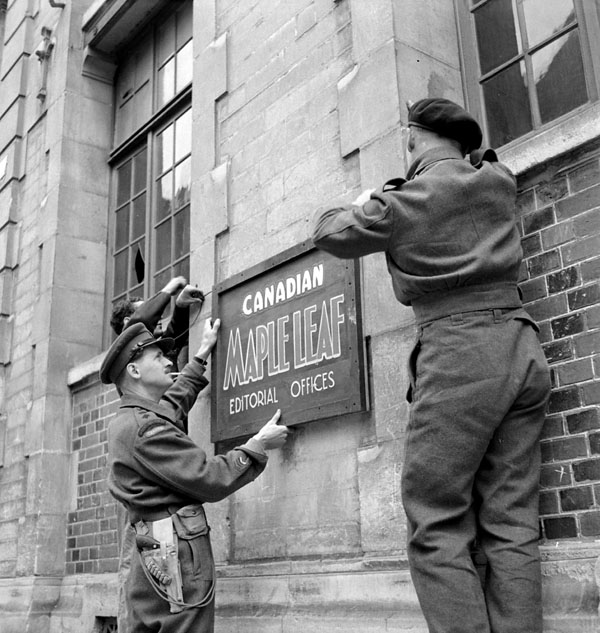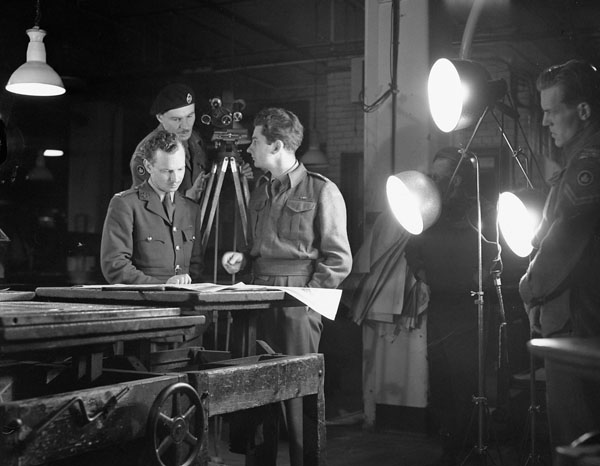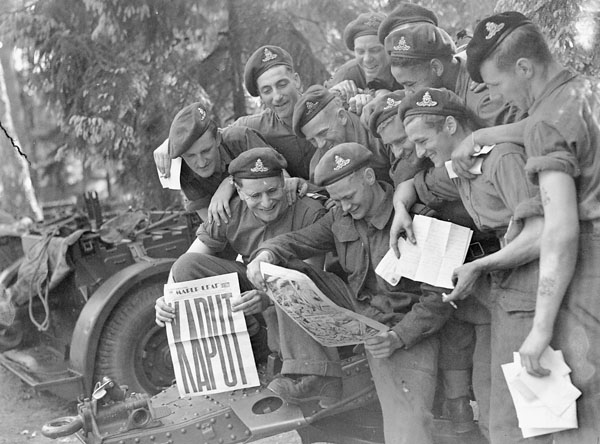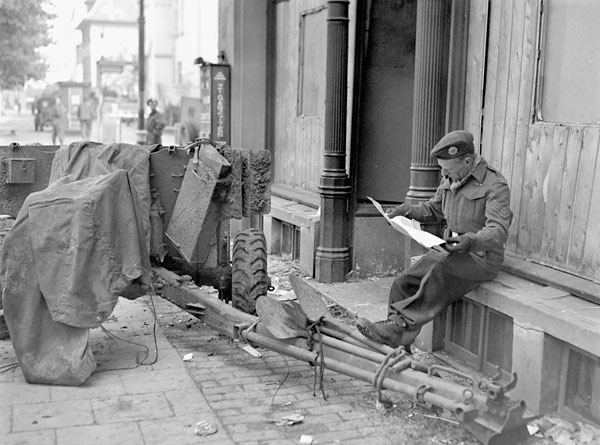About The Maple Leaf
About The Maple Leaf
Transcript
The Maple Leaf, our country’s symbol and a defence tradition, now has a new home on Canada.ca!
The Maple Leaf – we’re continuing to tell the stories of Canada’s Defence Team.
The Maple Leaf is now on Canada.ca
Defence Team members told us how we could improve The Maple Leaf. We listened.
Since The Maple Leaf moved online in 2017, we have tracked reader feedback, researched online news trends, and reviewed concerns about site accessibility. In short, you wanted a more reader-friendly home for The Maple Leaf.
Well, we found it!
With an intuitive search function, flexibility in how we can present Defence stories, and a more stable support system, Canada.ca is the perfect place for our news magazine to grow and flourish. Check out our video that outlines the key improvements made to The Maple Leaf that we’ve made in response to your feedback.
We have also improved site accessibility by reducing the amount of time it takes for pages to load after addressing conflicts with the DWAN.
If you are a member of the Defence Team, and have a story to tell, we want to share it! Check out our Submission Guidelines, and reach out to Internal Communications for more information.
What is The Maple Leaf?
The Maple Leaf is the national, online source for stories about the Canadian Armed Forces (CAF) and the Department of National Defence (DND). We publish information on the latest operations and exercises, pay and benefits, health and well-being, new initiatives, policy changes that affect the Defence Team, and human interest stories about the members of the CAF and the civilians that support them.
Originally published during the Second World War to inform and entertain the Canadian troops posted overseas, The Maple Leaf has continually adapted to the changing media landscape. In 2017 we moved to a digital-only platform, with the final print issue published in July 2017.
The Maple Leaf has a rich and storied legacy.
Members of the Defence Team are invited to submit articles for consideration. Submission guidelines can be found here.
Learn more about the history of The Maple Leaf
The origins of The Maple Leaf
“This is the kind of a piece that tempts the opening: it seems like yesterday. But, of course, it being more than 40 years since the founding of the Canadian Army newspaper The Maple Leaf, it doesn’t seem like yesterday at all.
“Because yesterday was pleasant and cheerful and homey and relatively peaceful. And the day the first copy of The Maple Leaf staggered off the presses of a beat-up printing plant in Naples, Italy: January 14, 1944, that day was not pleasant nor cheerful, far from homey and definitely not peaceful.”
— Major J. Douglas MacFarlane (1987)

Members of The Maple Leaf staff checking the newspaper coming off the printer.
The story of The Maple Leaf begins in 1943 with a visit to Canadian soldiers in Italy by Colonel James Layton Ralston, Minister of National Defence. He was concerned with the needs of the troops, whose top priorities at the time were faster mail and more news from home.
Better mail service could be arranged, but news from Canada would be a bigger project. Initial suggestions—sending hometown papers to the front or having Canadian Press News air mailed in to be printed in Italy—were deemed too impractical or slow. The time had come to establish a Canadian army newspaper.
Colonel Ralston appointed his staff secretary, Lieutenant-Colonel Richard “Dick” Malone, to set up publication. Lieutenant-Colonel Malone agreed, with stipulations: first, that the paper would be published and distributed daily with the rations; second, that the paper would have editorial freedom and no direct obligations to the chain of command or the government. In return, he agreed that it would publish no opinions on domestic issues, or on internal military problems that might impact morale.
The Maple Leaf was born.
Major J. Douglas MacFarlane, formerly a reporter and editor with The Windsor Daily Star and The Toronto Star, was selected as managing editor for the new paper. It fell to him to find a printer, supplies, personnel, and material. The first issue was put out on January 14, 1944 in Naples, Italy, less than 10 days after he had begun that search.
By early February The Maple Leaf was publishing daily, circulating over 10,000 copies by land, air, and sea to the Canadian troops stationed around the Mediterranean—but its story was only just beginning).
The Maple Leaf in the Mediterranean

Gunners of the Royal Canadian Artillery pause to read a new issue of The Maple Leaf together. Photo: Library and Archives Canada.
Army personnel with newspaper experience were recruited to staff The Maple Leaf in Naples. Some volunteered—like Sergeant W. G. “Bing” Coughlin, who wrote in to the fledgling newspaper to ask if they needed a cartoonist. Early issues had no illustrations, lacking the zinc with which to make engravings; to hold them over until the Army could furnish supplies, newspaper staff visited local undertakers to requisition zinc plates from coffin interiors.
Other difficulties abounded: rats chewed the supplies, bombs took out the power, Italian officers used the press room as an air raid shelter, and the Germans, in their recent retreat, had attempted to cripple the presses by stealing the Es from the movable type used to print the papers. Nevertheless, The Maple Leaf went out daily—by whatever means necessary. It was not uncommon for the paper to be distributed by pack mule.
Rome fell to the Allies on June 4, 1944 and the paper prepared to move, with an advance party of staff racing to the city to scout a new location. They settled in the Pensione Iaccarino, directly across from Rome’s Foreign Press Club, and from there had considerably less trouble. Staff worked through the evenings, filling the pages with letters, stories, and comic strips for the morning’s publication. Material was drawn from news agencies, Canadian press syndicates, and war correspondents’ dispatches, and reporters travelled to the front on a regular rotation to write articles on the war effort.
Meanwhile, Lieutenant-Colonel Dick Malone had established sibling papers in Caen, France and in London to serve the Western Front. With the link-up of the Italian and Western forces in spring 1945, the Rome and Caen editions were merged in Brussels. It was the Brussels Maple Leaf that would continue to inform and inspire Canadian troops to the end of the war and beyond.
The Maple Leaf on the Western Front

Lieutenant-Colonel Dick Malone (left) helping to erect the sign at the editorial office of The Maple Leaf newspaper in Caen, July 1944. Photo: Library and Archives Canada.
The second edition of The Maple Leaf was established in July 1944, a mere month after the Normandy landings and the beginning of the liberation of France. Caen, the original home of the Western edition, was still under active shell fire when the paper began operations, and the newspapermen were constantly having to dive for cover under their work tables.
Production of the Caen Maple Leaf was plagued by other troubles as well. The plant itself was primitive, and there were constant problems with the machinery of the press. Sections of the paper were printed upside down; images were misprinted, coming out as indecipherable black blobs; parts of the press broke or malfunctioned regularly. Nevertheless, for three months the printers persisted through what were widely acknowledged as the worst conditions The Maple Leaf had to endure all the length of the war.
With the advance of the Western Front, the paper moved to Brussels in September of that year. The ultra-modern plant of Le Soir was greeted with deep relief by The Maple Leaf staff; with new resources at their command, printing proceeded much more smoothly. And though conditions in Naples and Rome hadn’t been nearly so bad as Caen, the staff from the Mediterranean edition was equally pleased to move into the Brussels plant when the Italian and Western forces linked up and the editions were merged in March 1945.
It was the Brussels edition that proclaimed the end of the war in Europe with a single word—“KAPUT”—emblazoned across its whole front page, and the end of war in the Pacific with a cover reading “It’s All Over!” But the story of The Maple Leaf was not ended yet.
The Maple Leaf in London

The Canadian Army Film and Photo Unit shooting a film about the production of the London edition of The Maple Leaf on June 7, 1945.
The third edition of The Maple Leaf was established in London in July 1945, with the aim of serving the Canadian soldiers who were constantly passing through the city after the end of the war in Europe.
From the beginning the London paper had a much easier time than either of the other Maple Leaf editions. It had copy supplied by such news agencies as Reuters, British United Press, Press Association, and the Canadian Press; it had its choice of world-class photography from a variety of agencies or from Canada’s Army, Navy, and Air Force sources; it employed staff writers in Canada, Europe, and at the training base in Aldershot, England.
Printing was handled by civilian operators from the London Evening Standard, working with state-of-the-art equipment, and circulation was likewise managed by the Standard with daily distribution. And though the English civilians working for The Maple Leaf were known to despair over the Canadians’ differing layout, copy, and spelling standards, the working relationship was a fond one.
The vast majority of staff who worked on The Maple Leaf were men; Private Dorothy Sage, of the London edition, was one of only three women who made regular contributions to the paper. Having come in as a clerk/typist, she soon also found herself darning socks, making coffee, cooking, cleaning—and providing alibis for certain staff members when women called looking for them. Nevertheless, she found the work thrilling and the atmosphere exciting, and wrote a column relating her experiences for one of the final issues of the London edition.
In February 1946, with much of the Canadian Army making its way home, the London Maple Leaf closed up shop. Only the European edition was left to continue serving those troops still abroad.
Features and coverage of the wartime Maple Leaf

Gunners of the 12th Field Regiment, Royal Canadian Artillery, with the Victory issue of The Maple Leaf newspaper in Aurich, Germany on May 20, 1945. Photo: Library and Archives Canada.
The purpose of The Maple Leaf was always to inform and entertain the troops of the Canadian Army. To that end, it ran a number of regular features with tones ranging from serious to comical, always keeping in mind the concerns of the rank and file.
The most important element of The Maple Leaf’s coverage, of course, was the news from Canada and the Canadian fronts. News from home was intended to keep the troops connected with Canada; the frontline news, in addition to giving the soldiers a sense of the bigger picture, was a huge boost to morale. Regular readers were eager to see their unit represented in print, often hounding the staff on when a promised article would be published. Predictably, this made trouble for the censors, who would often try to delete references to specific units, their positions, or their achievements—facts that made up the meat of these articles.
Beginning in May 1944, The Maple Leaf began publishing a poetry column featuring soldiers’ verse; it received so many submissions that the chore of sorting through them swiftly became a newsroom punishment. They also ran a column featuring an editorial question and answer session on post-war problems. It proved so popular that they solicited opinions on a variety of related issues—from the utility of Army training in civilian life to veterans’ organizations to what to do with gratuity pay—from the men in the trenches, running their answers in a six-week series beginning in October 1944. In March 1945, this was replaced with a letter to the editor column, which allowed soldiers to submit their own questions to print for the first time.
Art editor Les Callan did sketches and wrote short profiles on the Canadian soldiers making the push into Germany; cartoonists illustrated articles and created comic strips like This Army, Herbie, and Monty and Johnny, which ran alongside popular syndicated strips such as Li’l Abner, Our Boarding House, and Blondie. Pinup photographs made regular appearances—a common practice of the time that would be considered wholly inappropriate today. The paper also ran a baby beauty contest, soliciting photographs from proud Army fathers (and carefully returning them after the winners were selected).
As the war drew to a close, the focus shifted from reporting on the activities of Canadian soldiers to helping returning troops readjust to civilian life. In addition to providing logistical information, The Maple Leaf also ran an article on civilian fashions for those soldiers looking to make the most of their pay. The paper would continue publishing for as long as a significant Canadian Army presence remained in Europe, not printing its last issue until May 1946.
The Maple Leaf in the post-war period

Sergeant H. Lester of the South Saskatchewan Regiment reading The Maple Leaf newspaper in Oldenburg, Germany in May 1945.
At the end of the war, The Maple Leaf didn’t close up shop immediately: as long as Canadian troops remained abroad, it would continue its mission to entertain and inform. With the London edition established to cater to those soldiers passing through, the Brussels edition packed up east for its new home in Amsterdam.
The Maple Leaf was only there from September to November 1945, but it was an eventful three months. In Amsterdam, Major Doug MacFarlane, The Maple Leaf’s managing editor, heard a rumour that conscripts—rather than long-serving enlisted men—were filling the ranks of homebound units. Some investigation revealed that was indeed the case, and The Maple Leaf, the paper of the troops, immediately published a front-page editorial.
The chain of command was unimpressed, and Major MacFarlane was called in to meet with Army Commander Lieutenant-General Guy Simonds. Before leaving for the meeting, he handed off a second editorial for the next day’s front page. The headline: “… And Furthermore.” It was published, and Major MacFarlane was subsequently removed from his position. The staff threatened to strike; only the reminder that it would be considered insubordination was sufficient to stop them.
In November 1945, The Maple Leaf moved to Delmenhorst, Germany. Though the press operators in town were friendly and unresentful, the press itself had to be cobbled together from limited resources. It suffered many problems, including electrical, mechanical, parts, and supply issues, and the cartoons were often drawn on the backs of unclaimed SS posters.
In addition to the newspapermen, two women had a significant hand in the Delmenhorst Maple Leaf: Sergeant Ruth Carmichael, a staff writer from the Canadian Women’s Army Corps, and Hilde Weber, who took charge of the “This World” and “Inside Germany” columns.
The final edition was published in May 1946. But for a one-time reunion issue in 1969, The Maple Leaf’s time was done. It wasn’t until 1998 that it was revived and the modern-day paper was born. Originally published in print, The Maple Leaf has now made the transition to digital for a new era. Defence Team members, as well as all Canadians, can access the mobile-friendly website anytime, anywhere.
Information for this article has been collected from Barry D. Rowland & J. Douglas MacFarlane, The Maple Leaf Forever, Natural Heritage/Natural History Inc. (1987).